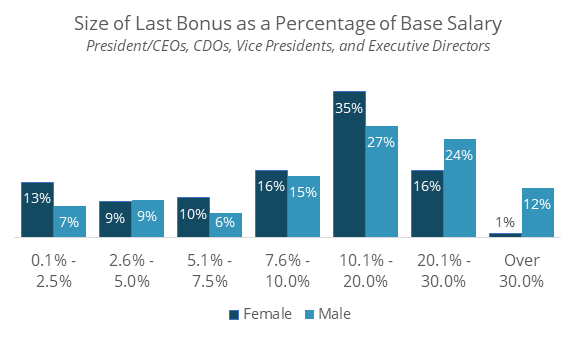The Gender Pay Gap Revisited: Little Progress in Two Years
Jenny Love
Published: 10/10/2024

Growing up, I listened to my mother talk about the challenges she faced as a woman in the workforce. She started her career in the 1970s, a time when women had few career options and were openly paid less than men for doing the same job. It was common, expected, and almost accepted. I used to think that those battles were hers to fight, that my generation wouldn’t have to deal with this kind of blatant discrimination. Surely, by the time I entered the workforce, things would be different.
Fast forward to now. I’m well into my 40s, with over two decades of professional experience, and I’ve come to realize something frustrating: while we’ve made progress, we’re still not where we need to be. The gender pay gap persists, and it’s not just an issue for my Boomer mother—it’s an issue for me, and if things don’t change, it could still be an issue for my sons’ generation.
The 2024 AHP Salary Report shows that men are still out-earning women across the board. In the United States, men in healthcare philanthropy make 33% more than women. The gap is smaller in Canada at 14%, but it’s still there.
Why does this matter? Because healthcare philanthropy isn’t just any sector—it’s a field where 80% of professionals are women. This should be a space where gender equity thrives, yet here we are, staring at a pay gap that persists despite the progress we’ve made.
It’s a bit of a nuanced picture. The glaring pay gap you’d expect doesn’t show up as clearly at the lower levels—philanthropy officers, annual giving officers, and other more junior roles show nearly equal compensation between men and women. But don’t be fooled. Once you look at the top-paying positions, the difference becomes stark. Men still out-earn women significantly in leadership roles. President/CEOs and Chief Development Officers? Men make 15% more. Executive Director and Vice Presidents (VPs)? The gap jumps even higher, with men earning over 25% more and 40% more respectively than their female counterparts.
The fact that we see equity in more junior roles is encouraging, but we can’t be complacent. These young professionals aren’t necessarily immune to the pay gap. It’s possible that the gap simply widens over time, and what looks equal today may not stay that way as their careers progress. We see it all the time—men and women start on similar footing, but as promotions, bonuses, and raises accumulate, the gap grows. Over time, women tend to miss out on those raises, and men end up with significantly higher earnings by the time they reach senior positions.
And it’s not just about salary. The AHP report shows that men are more likely to receive bonuses. Seventy-one percent of men reported receiving a bonus, compared to only 57% of women. And for men, the bonuses they received were often a larger percentage of their base salary. In those top-paid positions—President/CEO, CDO, Vice President, and Executive Director—36% of men received a bonus of 20% or more of their base salary. For women, it was only 17%.

What Can Be Done?
The question isn’t whether this pay gap exists—the data proves that it does. The question is: what can we do about it? And the answer, as frustrating as it may seem, isn’t simple. But there are actions we can take, both individually and as organizations.
1. Know the numbers: If you’re in a position to negotiate your salary, arm yourself with data. The AHP Salary Report is one of the best tools out there for benchmarking your compensation. Understand where you stand compared to your peers, and use that data to push for what you deserve.
2. Advocate for salary transparency: It's time for more healthcare philanthropy organizations to embrace salary transparency. When pay scales are hidden, so are the inequities. Transparent pay practices can bring these issues to light, forcing organizations to confront and correct discrepancies.
3. Focus on leadership development for women: Pay gaps widen in leadership roles, where men dominate and reap the benefits of higher salaries and bonuses. We need more intentional efforts to develop and promote women into these positions. This isn’t about quotas—it’s about creating opportunities and mentoring women so that they can access the same career advancement pathways.
Men Have a Role, Too
Men can and should be allies in closing the pay gap. This means advocating for women in meetings, ensuring they are part of high-visibility projects, and being transparent about their own compensation. We need more men willing to mentor women, not just in the technical aspects of the job but also in negotiating raises, advocating for promotions, and positioning themselves for leadership roles.
At the end of the day, the gender pay gap is a systemic issue, but it’s not one we’re powerless against. We may not be able to fix it overnight, but we can certainly push for changes within our own organizations. We can make sure that the next generation—those women just entering the workforce and the little girls behind them—don’t have to face the same frustrations and roadblocks we did.